Last year, the Irish Farmers Journal featured a 16-acre land reclamation project on a north Co Roscommon farm. The land was purchased this time last year and was adjoining the part-time farmer’s main block. There were no internal fences, part of the land was low-lying and another section contained a considerable hill.
The farmer decided to do critical drainage and infrastructural work to make the farm as productive as possible. After some hard work and a significant investment, the land has been transformed but there is still work remaining to ensure productivity increases across the entire block.
The main work carried out included drainage, scrub clearance, road infrastructure, water infrastructure and fencing. The farmer runs a simple system of contract-rearing heifers and needs to be able to grow enough grass to meet target liveweight gains during the year.
Installing a paddock system on the new block is a big help in terms of grassland management but it also has other benefits in terms of easily handling heifers during the breeding season. After the extremely wet winter, the drainage work carried out has been tested, but has worked well in general.
The recent dry weather has helped enormously to dry off the naturally heavy land and last week maiden heifers were given access to the driest paddocks.
The farmer said if he didn’t do any work on the new ground and left it as it was he would not dream of letting anything into graze it at this time of year.
“You wouldn’t even walk across it the way it was, never mind let cattle out. Parts of it were extremely wet,” he explained. Without drainage work and cleaning of existing drains the land would still be soaking even with the good drying weather.
Pictures one and two and three
Usually when we feature land reclamation work, we only get to see the work during and after the job is done. It is rare that a snapshot is captured of the true condition of the land before work was carried out.

Picture 1
This time last year the land was overgrown and covered in a mixture of rushes, flaggers and scrub and picture two is very representative of what the farmer had to deal with. The transformation has been significant since then. The block was divided into seven paddocks with an average size of 2.3 acres. Concrete water troughs were placed between paddocks and they are supplied by 0.5in diameter pipes. Stone was laid around the troughs to prevent the area getting mucky and soil eroding away.
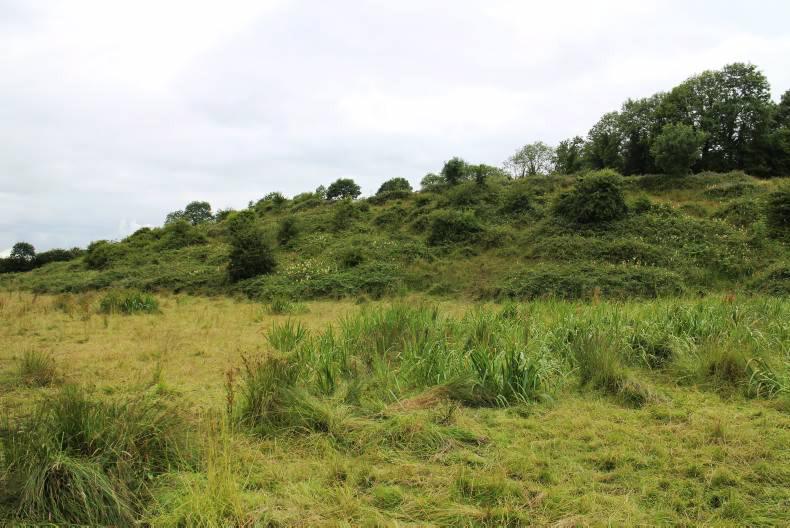
Picture 2
The hill was cleared of the scrub with a mulcher and a digger levelled the steeper parts to make it safer and easier to carry out machinery work in the future. The only reseeding carried out last year on the land was on this hill.
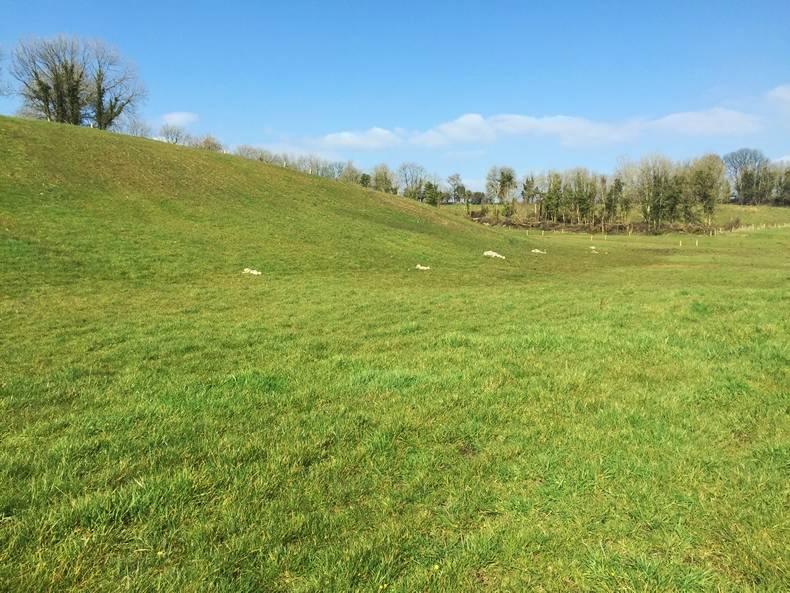
Picture 3
The grass seed used was a mixture of Abergain, Kintyre, Drumbo, Aberchoice and a clover blend at a rate of 1.5 bags to the acre and three bags of 10:10:20 were spread per acre. The grass seed has been successfully established on the hill but the cover is light. Once ground conditions are drier, the heifers will be given access to the hill to encourage the grass to tiller, encouraging growth.
Pictures four, five and six
The main cost so far involved in reclaiming this land was drainage. To begin with, all existing drains were cleaned out with a digger. Even open drains in neighbouring land were cleaned to ensure the water had a place to go and flow rate would increase.
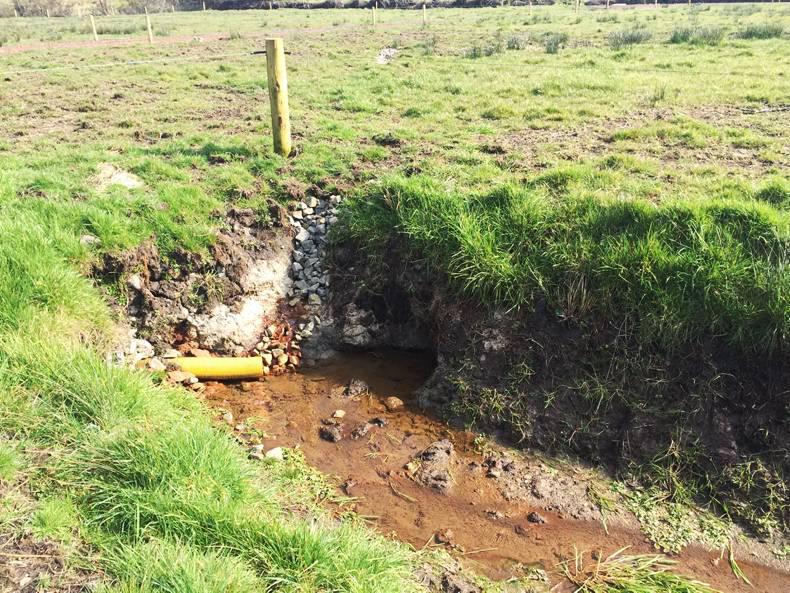
Picture 4
Next, a large drain was dug to a depth of 2ft at one end, moving down to 3ft at the outlet in the drain and a 6in diameter drainage pipe was laid. The pipe was covered in with 3in stone all the way to the surface. Collector shores feed into this main drain (picture five). These shores only contain stone and are 18in to 2ft deep, depending on the ground.
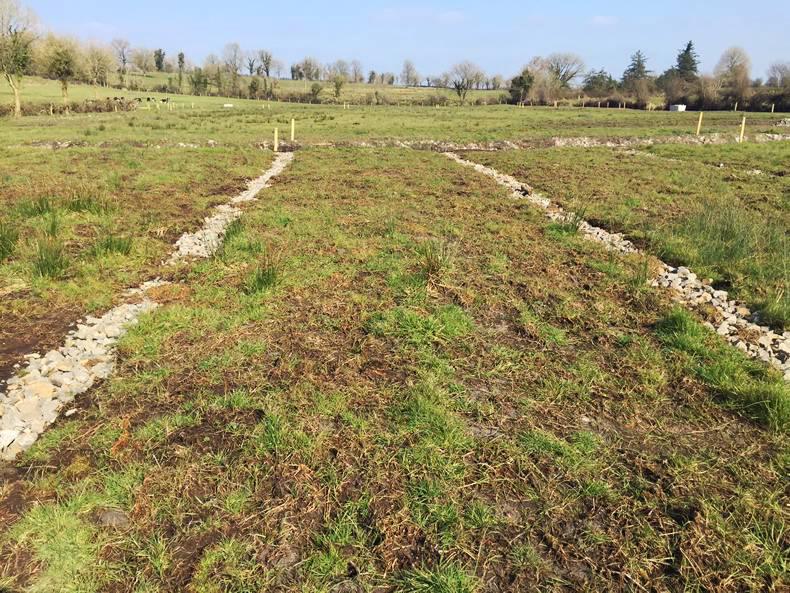
Picture 5
The collector drains have done their job and prevented water from accumulating in low-lying land. As of last week, the traditionally wettest areas were drying out nicely and the farmer reckoned they would be trafficable shortly. The main problem, however, is the lack of grass where the drainage work was carried out.

Picture 6
Last year he decided not to reseed the whole block because he had already gone over budget on the drainage work. But with no grass he has no choice but to reseed some paddocks. If he left these low-lying paddocks without reseeding, poor quality grasses and rushes are likely to come back.
Figure 1 displays the paddocks the farmer is planning to reseed. These paddocks were the ones that needed the most drainage work and take up approximately six acres.
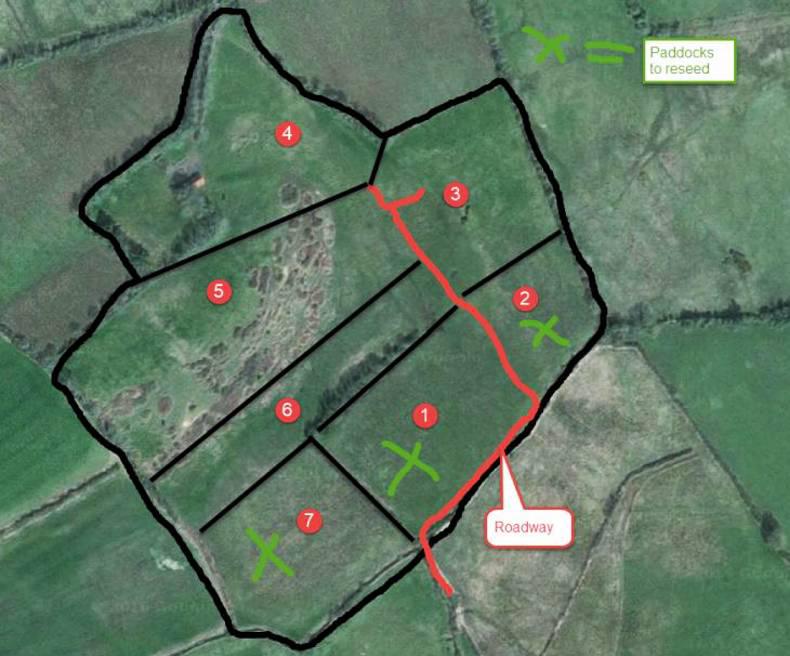
Figure 1
He now plans to spray off whatever vegetation is there with glyphosate, while disc-harrowing the ground to prepare a seed bed. The same grass seed mix that was used on the hill will be used in this area.
Picture six shows a section of the land that is still saturated with water. Another shore will be added to make sure water doesn’t collect here again.
Future work
A soil test was taken one month ago and the results indicated poor soil fertility with predominantly index one and index two soils. The land also had a requirement for lime. Neither of these results were surprising given that the land was rented on a short-term basis for a large number of years prior to the purchase.
The farmer will organise for two tonnes of lime per acre to be spread on the 16-acre block as soon as conditions allow. Once the bottom fields are reseeded in the next few weeks, the focus will be on improving soil fertility by using compound fertilisers such as 10:10:20 or 18:6:12.
The drainage work, roadways, mulcher, water troughs, fencing, reseeding and other general work cost €1,246/acre (€3,080/ha) to date. Between reseeding the six acres and liming the entire, the farmer is likely to spend another €252/acre (€622/ha) this spring. The investments to date and the future investments are outlined in Table 1.
The farmer says it was a sizeable investment but he will never regret doing the work. Every penny that was spent was used to improve the productivity of the land and set it up to grow grass. Once the drains are maintained and the soil fertility is improved, there is no reason why this land won’t perform well into the future.
To read the full Reseeding Focus Supplement click here.










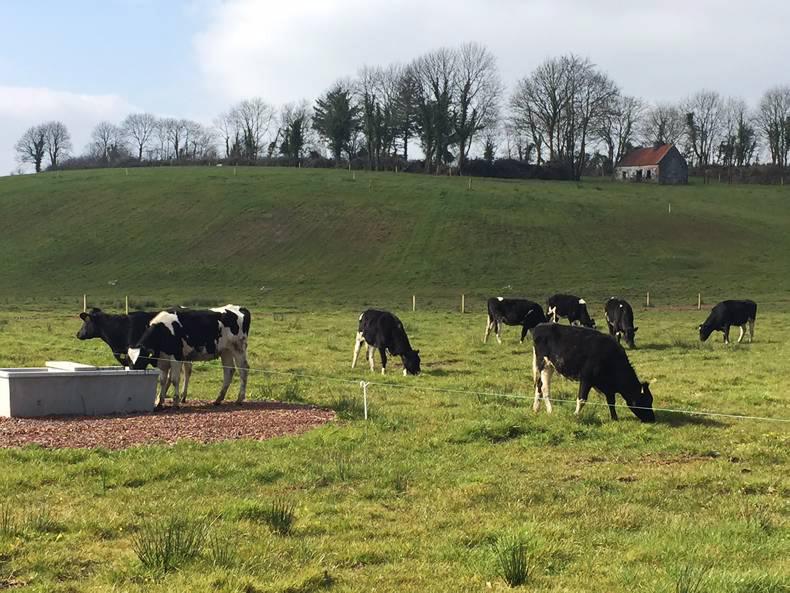
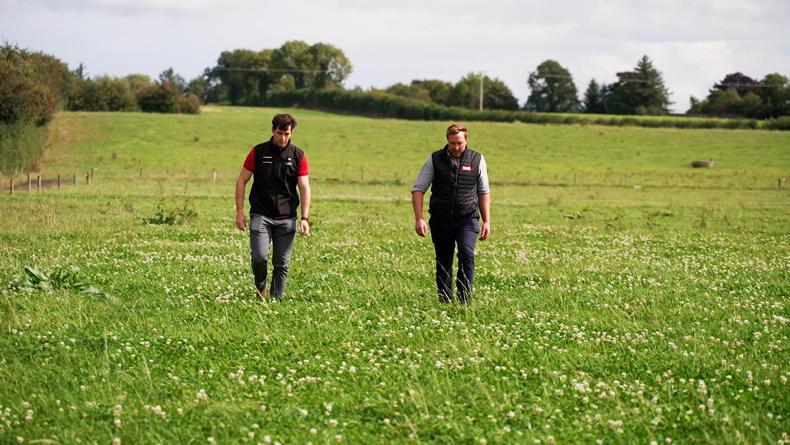
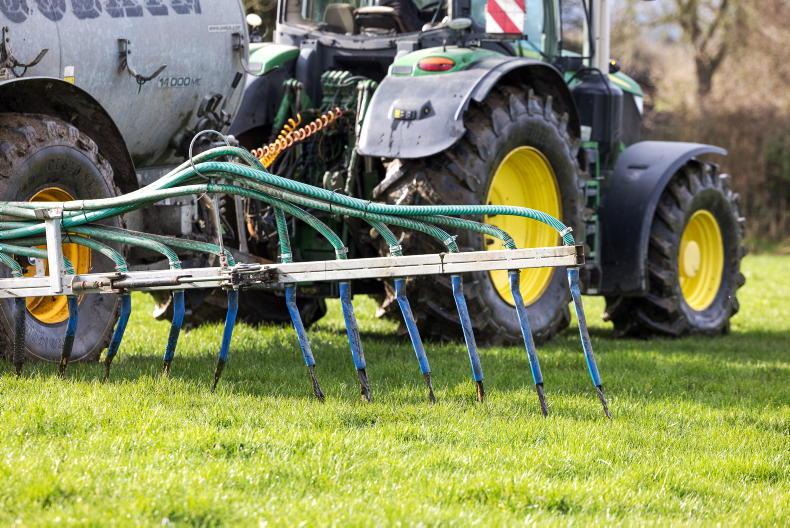
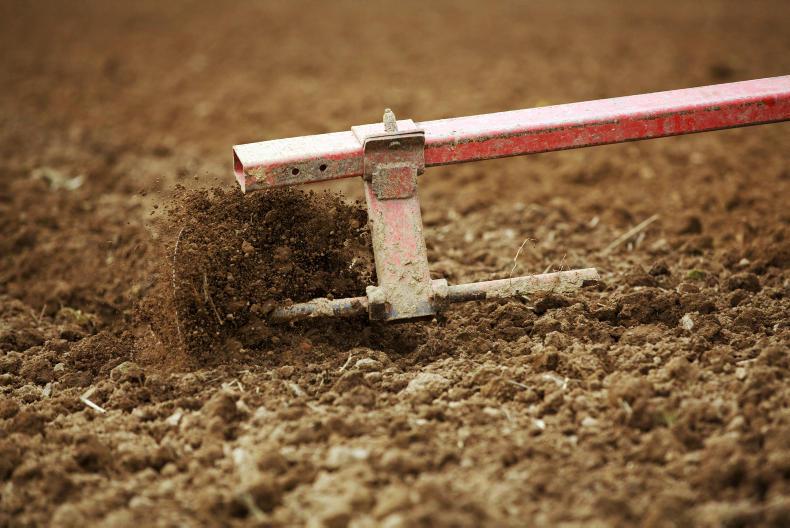
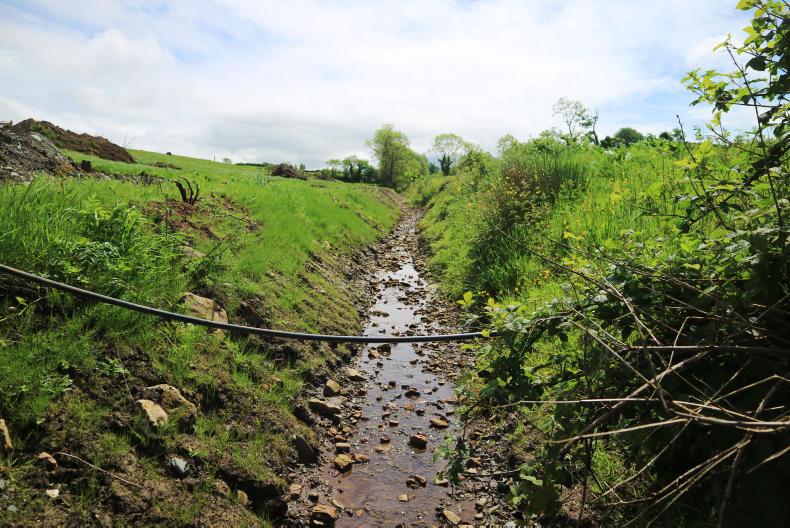
SHARING OPTIONS